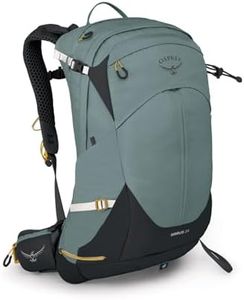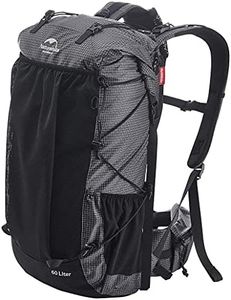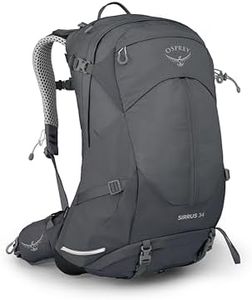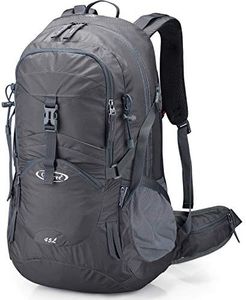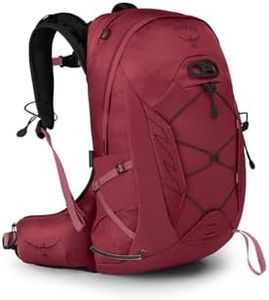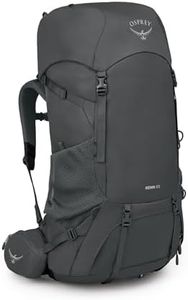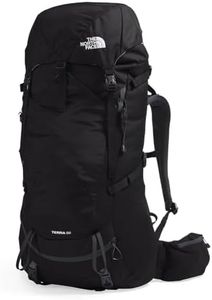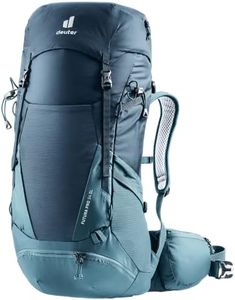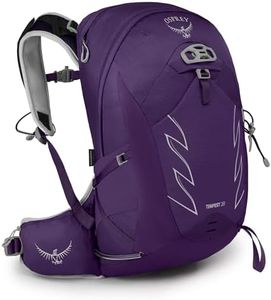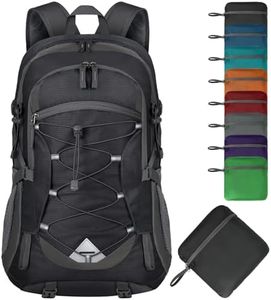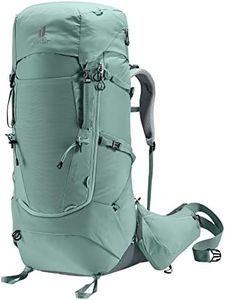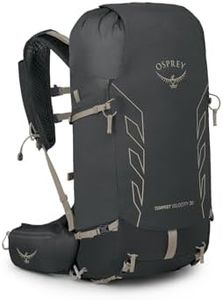We Use CookiesWe use cookies to enhance the security, performance,
functionality and for analytical and promotional activities. By continuing to browse this site you
are agreeing to our privacy policy
10 Best Womens Hiking Backpack
From leading brands and best sellers available on the web.By clicking on a link to a third party's website, log data is shared with that third party.
Buying Guide for the Best Womens Hiking Backpack
Choosing the right women's hiking backpack is all about making sure it fits your body comfortably and meets the demands of the hikes you plan to take. Your backpack impacts not only how much you can carry, but also your comfort, stability, and enjoyment on the trail. The right choice depends on considering how long your hikes will be, how much gear you typically carry, your personal build, and any extra features you might want. When shopping, think about trying on different models loaded with some weight to get a feeling for their fit and function.Capacity (Volume in Liters)The capacity of a backpack, usually measured in liters, tells you how much it can hold. This is crucial because you'll want a bag that's big enough for all your essentials, but not so big that it becomes heavy and bulky. Small packs (15-30 liters) are best for day hikes and short outings where you only need water, snacks, and maybe an extra layer. Medium packs (30-50 liters) work well for overnight trips or when you need to carry more gear. Larger backpacks (50+ liters) are designed for multi-day treks where you’ll need to bring camping equipment. Your typical hike length and packing habits should guide your choice.
Fit and Sizing (Torso Length and Hip Belt)Backpack fit refers to how well the pack matches your torso length and hip size. Women’s backpacks are designed to fit female body shapes, often with shorter torso lengths and more contoured hip belts. The right fit ensures weight is distributed evenly, preventing sore shoulders and back pain. When assessing fit, look for packs that offer adjustable torso lengths and hip belts to dial in a secure, comfortable feel. Take your own body measurements and match them to the pack’s sizing chart for the most accurate fit; your comfort during long hikes depends on this.
Weight (Pack Weight Empty)The weight of an empty backpack matters because every ounce adds up on the trail. Backpacks range from ultralight to extra durable models. Ultralight packs are good for experienced hikers or those who pack minimally, while heavier packs may offer more padding and features for comfort or load support. Decide how much you prioritize lightweight versus comfort and durability, based on your usual hiking style and preferences.
Suspension System (Frame and Padding)The suspension system includes the internal frame, shoulder straps, hip belt, and ventilation features that help support the load and maintain comfort. A good suspension system will transfer weight to your hips, reducing strain on your shoulders, and provide airflow to keep you cool. If you carry heavier loads or go on longer hikes, seek packs with robust frames and thick padding. For shorter hikes, simpler, lighter setups may suffice.
Access and Organization (Pockets and Openings)How you access your gear in the backpack can make a big difference in convenience. Some packs have a single top opening while others have multiple access points like front, side, or bottom zippers. Extra pockets, compartments, and organizers help keep your gear sorted and easy to reach. If you like keeping things organized or need quick access to specific items, look for packs with more compartments and external pockets.
Hydration CompatibilityHydration compatibility refers to whether the backpack has a sleeve and openings to hold and use a water reservoir (bladder). This feature is valuable if you prefer sipping water from a hose while hiking instead of stopping to pull out a bottle. If hydration is a big part of your routine, ensure your chosen pack can fit your desired reservoir size.
Adjustability and CustomizationAdjustability covers how much you can alter the fit and features of the backpack—like swapping hip belts, moving shoulder straps, or compressing the pack to fit smaller loads. The more adjustable a pack, the better you can tailor it to your body and needs. If you find that standard fits don’t always work for you, prioritize packs with lots of adjustability.
Weather ResistanceWeather resistance describes the backpack’s ability to keep its contents dry during rain or snow. Some backpacks are made with water-resistant materials or treated zippers, while others come with built-in or removable rain covers. If you hike in areas with unpredictable or rainy weather, a water-resistant pack or a rain cover is a smart choice to protect your gear.

